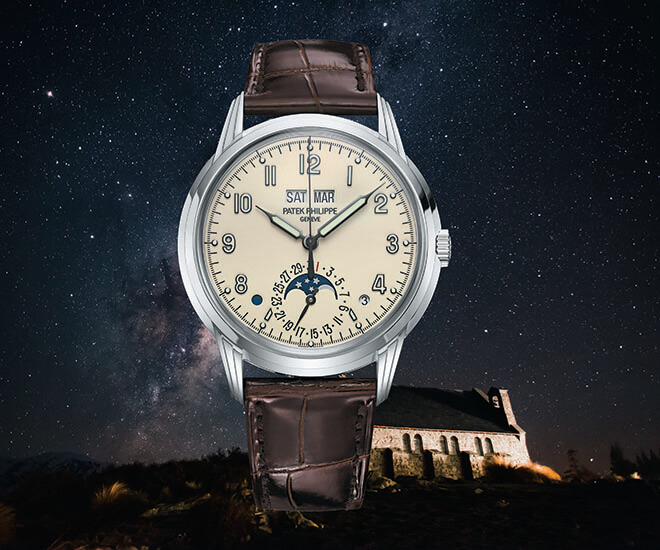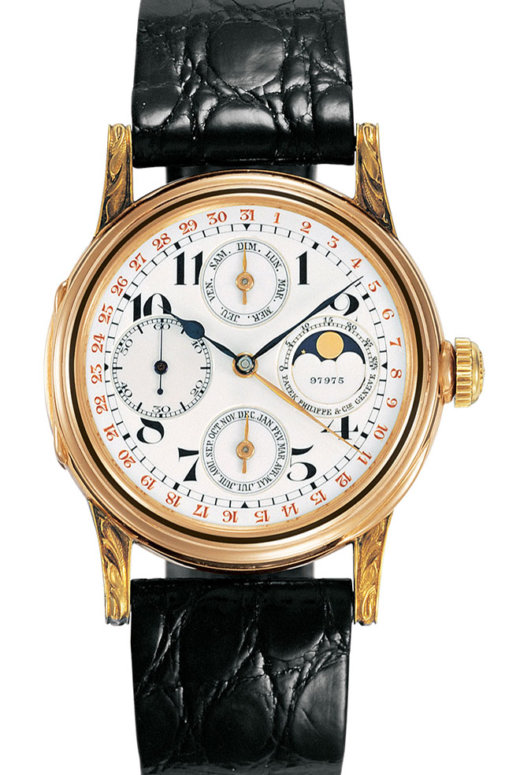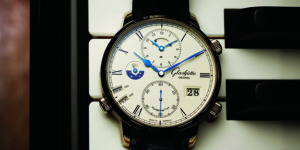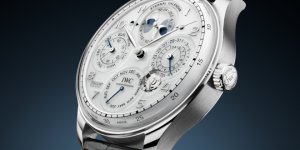A Closer Look at the History of Patek Philippe’s Perpetual Calendar Timepieces
A thousand years of astronomy and mathematics paved the path to ingenious Patek Philippe perpetual calendar wristwatches

In May 1902, an object uncovered by archaeologists cast some light on mankind’s historical grasp of horology and our ability to use algorithms to compute the day of the week for any given year, month, and day of month. What we take for granted today on our wrists, was a mechanical marvel and feat of ingenuity for the makers of what came to be known as the Antikythera device.
The ancient Greek ‘computer’ was able to predict the motion of celestial bodies and eclipses for calendar and astrological purposes. Make no mistake, it was a computer; what we do today with silicon wafers and microchips was computed with gears like those of a clock and uniquely shaped components with teeth reminiscent of Radian-scale protractors, likely used to translate mechanical instructions for the “operating system”.
To early 20th century eyes, the purpose of the device was obscure – nothing at this level of technology had been discovered in antiquity. As we approached the 21st century, the advent of advanced imaging technology revealed that intricate gear trains within the device operated at least six indicators displaying all manner of celestial time: the sun, the moon and the four closest planets which men of the era could perceive: Mercury, Venus, Mars, Jupiter and Saturn. And we haven’t even discussed the three dimensional moonphases and the twin dial system that displayed the calendar information, and the stars that ‘rose’ and ‘set’ on any given date.
Believed to have been designed and constructed by Greek scientists as far back as 205 BC, the Antikythera (named for the island coast where the object was discovered) was possessed of technological and engineering features lost to Europe until the development of the first mechanical astronomical clocks in the 14th century.
As it was then and as it is now, these analogue computers essentially take complex tables and calculations and render them arithmetically into gears, wheels and other innovative horological components (like snail cams for leap years). Perpetual calendars we know today from the aforementioned 14th century mechanical clocks, thus, while the underlying principles of ancient analogue computers and mechanical clockwork may be similar, their developmental paths are entirely different.
That said, the devices in question are able to reckon the days, months and years in figurative perpetuity (most perpetual calendars are accurate to a hundred years before requiring adjustment), hence the name perpetual calendar.
While Patek Philippe can lay claim to creation of the first perpetual calendar wristwatch, it was an English watchmaker named Thomas Mudge who invented it in the 18th century. The 1762 Mudge perpetual calendar pocket watch tracked and indicated different measures of time such as day, month (lunar month) and length of year.
The ingenuity of men such as Mudge and the watchmakers at Patek Philippe allowed them to devise minute gears and springs to compute relatively complex arithmetic into an easily understood display. Patek Philippe’s first serially produced perpetual calendar wristwatch spanned 34mm and featured an instantaneous retrograde date display, day and month indications, and a moon phase indicator. Though the Geneva manufacture would sell its first perpetual calendar wristwatch to an American collector named Thomas Emery in 1927, they would only begin serial production of hand-wound perpetual calendar wristwatches 14 years later, beginning with the famed ref. 1526.
By 1962, we would see the first hand-wound perpetual calendar references, predecessors of the contemporary self-winding perpetual calendar wristwatches. This new age was heralded with the ref. 3448 and has since been perpetuated (pun intended) by the legacy of contemporary Patek Philippe Perpetual Calendar references.
(To be clear, other watchmaking companies also got in on the action, but there is a kind of transcendent magic to Patek Philippe perpetual calendars that we are following here – Ed.)

The first wristwatch with perpetual calendar
Why is adjustment needed every 100 years?
Mudge invented the mechanism only 10 years after the Gregorian calendar was officially adopted in England, his home. His mechanical perpetual calendar interprets the Gregorian calendar and its 400 year cycle comprised of 303 common years and 97 leap years totalling 146, 097 days into an engineered series of analogue components and wheels. Each of these moves in concert to display the precise day, date and month (even their varying lengths) without additional adjustments even for leap years. Why then do our contemporary perpetual calendars still need adjustment after a 100-year period? Then as now, a cycle is a 100-year period with 25 leap years and in some instances, a 100-year period with 24 leap years but at its core, all calendars begin with three essential movements of Earth (and its satellite, the moon) – our axial rotation, with which we calculate hours in a day; orbit of the moon, with which we calculate month and finally; how long it takes for the Earth to orbit the Sun, 364.25 days or one year.
Did you know that the “simpler” Annual Calendar (invented by Patek Philippe) actually has more parts as well?
An annual calendar has about 40 more parts than a perpetual calendar due to the fact it is using a system of gear trains compared with the perpetual calendar’s system of levers.
So an annual calendar has more parts but ironically, is more accessible than a perpetual calendar as the gear train construction is still simpler to assemble and fine-tune than the levers of the high complication. One of the main complexities of perpetual calendar is in adjusting that one big lever that activates simultaneously various parts of the movement.
From: World of Watches #39.







